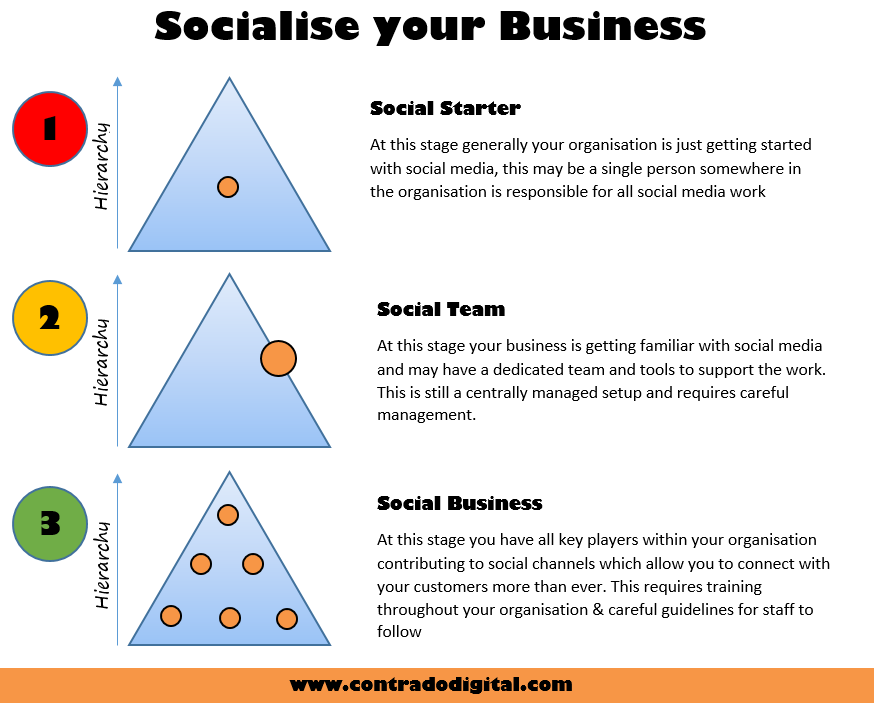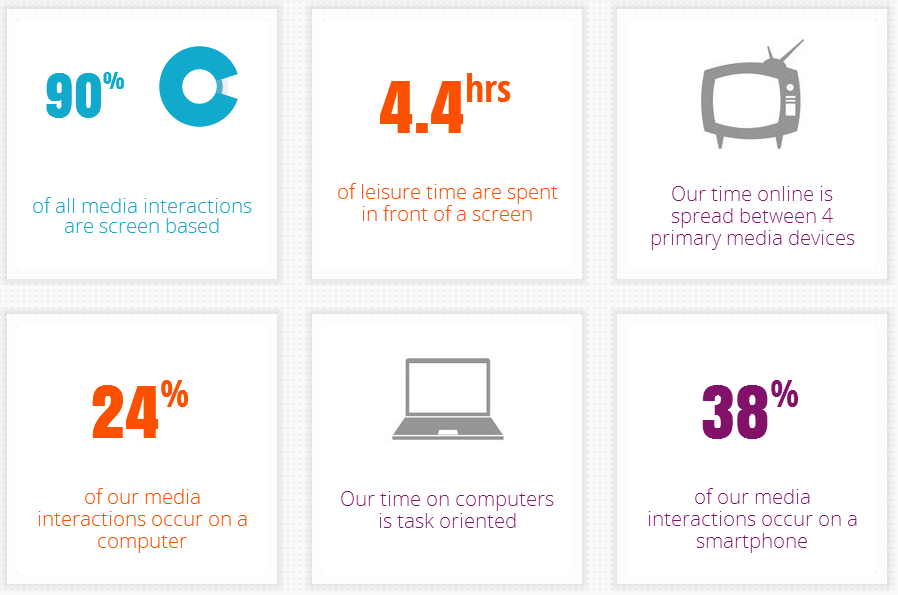We recently attended a digital marketing conference in Manchester called SAScon where we heard some exciting statistics from some leading UK brands including ASDA and MoneySupermarket.com. So we thought we would share some of the insights from the event so you can see how this can apply to your business.

Session 1 – The State of the Digital PR Nation
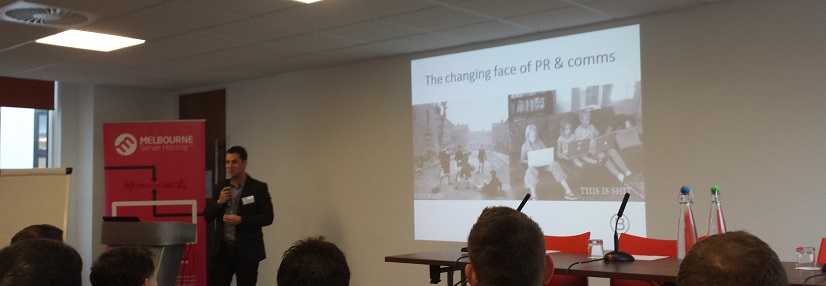
The first session of the day kicked off with a discussion around the state of the digital PR world with Drew Benvie, the Managing Director of a London based communications agency who talked through his experiences. The key message from the session was that social media has disrupted the PR industry with brands being able to connect with their audience easier and faster than ever before. So much so that the San Francisco Chronicle are putting all of their journalists through a two month social media boot camp.
Drew highlighted how businesses are increasingly moving away from the traditional social media manager and towards a more social business as we have illustrated below;
This involves everyone throughout an organisation to be utilising social media, from marketing teams, customer service teams, human resources teams, sales staff and C-level people. Businesses need to move from simply being digitally adapt, but also being socially adapt and with people checking their phones an average of 110 times per day this is a huge opportunity to get in front of your audience.
Turning traditional PR on its head was further highlighted with statistics that 90% of media is consumed on a screen of some sort which is a phenomenal amount.
The future was clearly looking towards a world of image sharing, wearable technology such as FitBit, messaging and data. With large brands looking beyond followers, fans, engagement & CTR and instead are using social media to drive footfall into their stores since the offline and online worlds are intrinsically linked. Brands are struggling to keep up with the warp speed changes within the industry though.
Session 2 – Where Next for Metrics
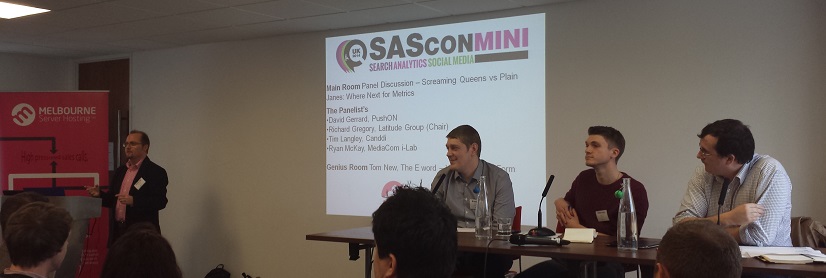
The next session was a panel to discuss where we are heading next for metrics and measuring success in the digital world. Some of the interesting points raised throughout the session was that while Universal Analytics has been available for a while now, it hasn’t really been picked up by many to utilise the full features available. It will be interesting as this gains more traction to see how brands begin to join data together in exciting ways. One example given was how one brand utilised custom dimensions within Universal Analytics to include weather conditions and geo-location to understand what impact website visitor numbers and revenue figures were impacted by these. One of the key features with Universal Analytics is the amazing ability to understand customers, not just visits. This is something to cover in a future post, but in summary Universal Analytics allows you to see when a customer visits from multiple devices which can provide some really cool data;

Universal Analytics
With data being so easy to capture, it is essential to capture as much data as possible to understand your customers better. Once the data has been captured, it can be analysed for a deeper understanding of trends and insights. On the topic of data, businesses are moving away from last click attribution models to track results, but looking at a more holistic approach and including data from first click attribution models. This helps to provide a true insight into how your business is performing which allows you to make smarter decisions about where to invest in the future.
Leading on from this additional data and understanding allows you to tailor content towards your audience. A prime example of this is for customers accessing your website from an iPhone while browsing for new laptops. It is extremely unlikely that those visitors are going to be interested in budget end PCs, instead show those customers products they are most likely interested in such as Apple laptops. Not only will this improve the customer experience, but this will also lead to an increase in conversions and sales.
On the content side, it was stressed about not simply creating content to generate links, but to fully understand where this content fits into the customer buying cycle. Only then will this content truly add value and deliver long term results. Content should be adding PR value, gaining mentions on other websites, being shared on social channels and the on-page data metrics should indicate how much customers enjoyed viewing the content.
With the recent change in (not provided), several companies in the digital space have attempted data modelling to retrieve this data by looking at Click Through Rate data on the search engine results pages along with keyword rankings. Although this hasn’t produced any models that are accurate enough to rely on. Following on from this, it was emphasised that a #1 ranking for a specific keyword isn’t the metric that businesses should be focusing on. In situations where a strong brand is ranking in position two or three, then this will still generate more clicks as customers prefer to view content from them than others. Metrics that businesses need to focus on in 2014 need to be focused around the right metrics for their business that are going to give a deep understanding of customers and not simply vanity metrics. Ultimately, revenue is the end point for most businesses to focus on, so other metrics need to work towards supporting this main KPI.
Session 3 – Why Content and Context are the Key to Making Meaningful Social Connections
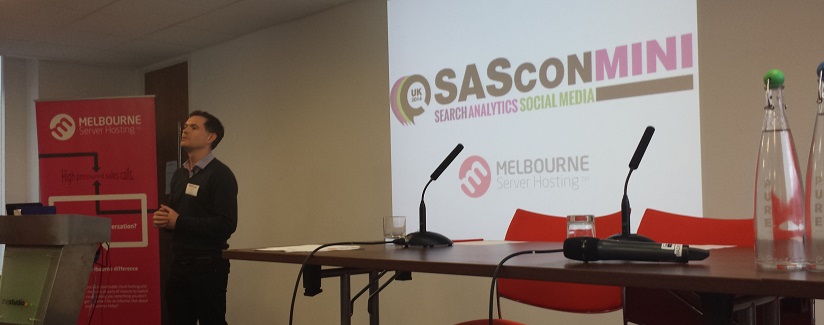
The third session of the day was from Dominic Burch, Head of Social at ASDA who gave a fast paced talk with insights into how ASDA utilise social media. Firstly what might surprise you is that an organisation the size of ASDA only has two people within their social media team, yet they manage hugely successful platforms that connect with their audience.
Dom started out with five simple thoughts;
1) The old rules don’t apply anymore
2) ASDA are a media owner and they’ll increasingly act like one
3) ASDA are a connector, not a collector
4) ASDA will only succeed if they win the trust of shoppers
5) Listen first, engage second, influence third
One clear theme throughout the day is that brands are increasingly stepping up to connect more with their audience and customers. To do this you need a good understanding of your customers, and it is clear that ASDA do know who their customers are. The image below clearly shows that ASDA know who their customers are and where they are online;
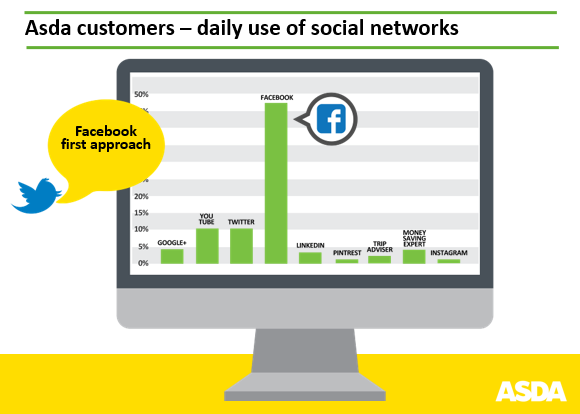
ASDA Customers on Social Media Channels
For ASDA, with Facebook being by far the most popular channel, this helps them to direct the strategy towards targeting those customers. Following on from this, ASDA also know that the typical Facebook follower has 232 friends and follow a total of 92 brands on Facebook, so ASDA need to keep their attention and stand out from the crowd.
One clear benefit of social media for ASDA is the ability to reach a huge audience and influence those people. On a monthly basis, ASDA’s Facebook page reaches 8.7 million people, generates 279,000 interactions and earns 157,000 clicks back through to their website. These are enormous numbers when remembering this is the work of only two people at ASDA. When comparing this to their traditional PR approach, where they were spending £150,000 per press release in a national newspaper (and they were running three of these per week!), it is clear that social media is a far greater opportunity to connect with their audience in a meaningful way. With the reach from social media, this tips the balance of power and enables ASDA to control their messages to their audience instead of going through traditional national newspapers.
While the above figures showcase the reach ASDA’s Facebook page has, Dom did stress that it is important not just to chase the numbers. Having a large following is utterly pointless if those people aren’t your target audience, a smaller number of more engaged followers are far more beneficial so connect to the right people with your messages.
In a similar theme, social media was compared with traditional TV advertising. ASDA has an 18% market share in the UK, meaning that running an advert on Coronation Street means that you are advertising to people who simply aren’t interested in the brand and wasting budget on this. Comparing this with social media, this allows a really targeted approach towards your audience to make your budget more effective at connecting with your audience.
Interestingly enough ASDA don’t have a huge budget for social media, so they have to focus on using relevant and low budget content that they can share socially. An example was given that with a £100 investment (yes, that low from a brand the size of ASDA!) resulted in content being shown in 100,000 newsfeeds of their audience. When comparing this to traditional PR, this is quite a difference. Another example of this was when a customer posted a question wondering if their dad was one of their oldest home shoppers. ASDA then went to visit the gentleman, took a photo and asked their Facebook fans to wish him a happy birthday which resulted in 25,000 likes for such a simply and cheap PR opportunity.
It was reiterated about the well-known fact that the best way to increase engagement on social media is to ask a question. This is clear when you compare ASDA’s engagement levels with their competitors;
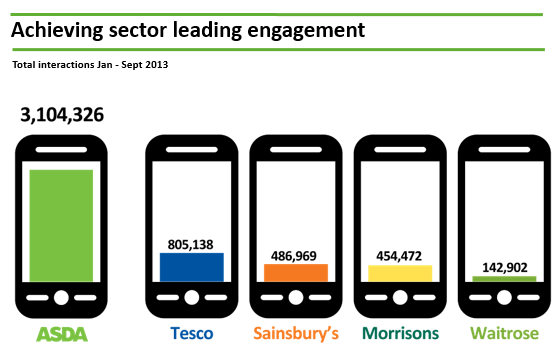
ASDA Social Media Engagement Levels
In-fact, ALDI do actually beat ASDA in terms of engagement levels, but this is a clear indication that ASDA are leading the way. One point made was that customers love it when ‘Del Boy Offers’ appear with the likes of 50p for 1 or 2 for £1. When customer see offers like this, straight away they are posted on social media channels which adds an extra dimension to the social media channels since it is essential these type of things don’t happen too often as it doesn’t show ASDA in a good light. Following on from this, in more extreme examples when there is a potential PR issue on social media, it is essential to take this offline to avoid it turning into a PR disaster. Never try and solve issues in a public space.
On the topic of follower growth, it was outlined that they have found promoting content and posts to friends of friends to be an effective method. The thought being that people who shop at ASDA are likely to be friends with other people who shop at ASDA. This can be seen in the graph below which contains the number of mentions over the past two years for ASDA;
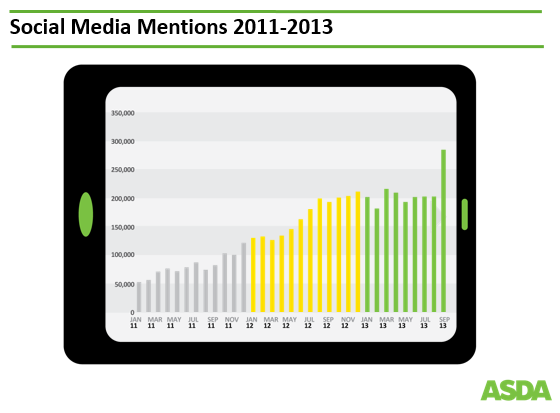
ASDA Social Media Mentions
Following on from this, ASDA had 268 million organic page impressions on their Facebook page. They were expecting to reach around the 300 million mark, although the Facebook update which tweaked their algorithm deciding what content to display in users newsfeeds really impacted ASDA’s organic visibility.
Taking a look in-store, some interesting statistics included that ASDA FM has a staggering 18 million listeners per week. Then looking at online and offline, the ASDA shop website gets 6 million visits per week, where 1 million of these use the store locator to find one of the 560 shops that are in the UK. Traditionally businesses have looked at online and offline as completely separate, although ASDA realise that people who shop online also shop in-store. So it is important to remember this when sending someone an email that they haven’t shopped online in a while, as they have likely been visiting in-store instead. They aren’t two completely separate groups of customers.
ASDA have started to link social media back to their website with their #ChosenByMe range which brings in social mentions together into a single place. A few other interesting ways ASDA is using social media can be seen on their editorial calendar below;
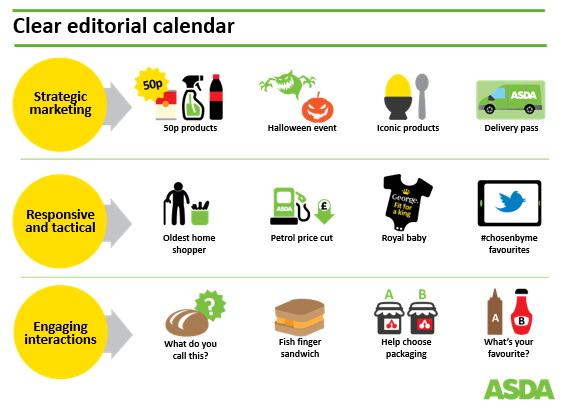
ASDA Social Media Editorial Calendar
From asking customers to help choose packaging on products, which resulted in 25,000 customers giving feedback within 1 hour, which is a huge opportunity for market research. To the good old debate about what sauce is best on a bacon butty, and ASDA found that it is quite evenly split. One key message was that content needs to start at the strategic level of your organisation. What key messages do you want to be talking about and who do you want to be talking to. Knowing this will help guide your social media activity.
Some final thoughts came around how we are going to be seeing much more of a ‘pay to play’ model on social media with changes in their algorithms leading to decreased visibility for brands. Long term we are going to see the death of the social media manager as we move towards social organisations at every level. Customers expect instant responses on social media channels and we are starting to see a much stronger interplay between social media and TV which was a similar theme mentioned at a recent event we attended, #SocialMediaWhatsTrending
Session 4 – Joining the Dots between PR, Social & Search
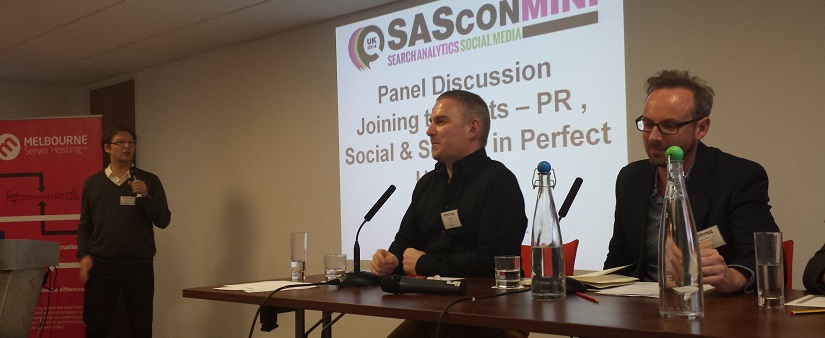
The next session was a panel discussion around the importance of joining the dots with digital marketing instead of treating each channel separately. The key message from the session was about how departments need to work together to achieve success. PR people need to be talking to SEO people, and vice versa. People working purely in SEO need to look towards telling stories to their audience. Then a common theme was around how everyone needs to be responsible for reputation management online. It is extremely easy for things to turn bad online, so everyone needs to be thinking about this with everything they are doing.
Session 5 – The top 5 Brands that ‘Get It and Deliver It’
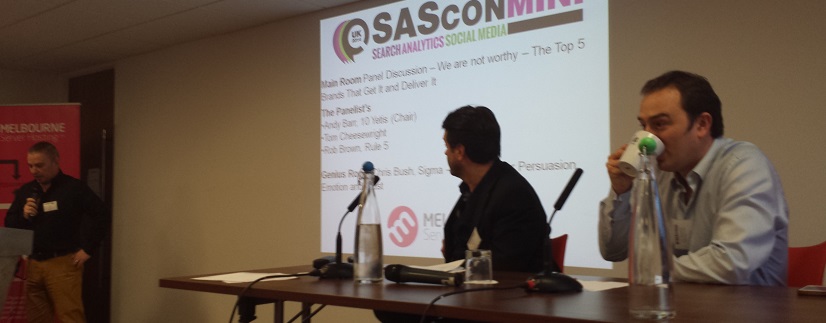
The fifth session of the day was another panel discussion that was focusing on brands that clearly understand the value of digital marketing.
Burberry
Interesting statistics including that 30% of all traffic to their website came from Facebook in 2013, with official sources stating that Facebook is a larger traffic source than Google for Burberry. This may not come as any surprise when you realise that 60% of Burberry’s marketing budget goes towards social media.
One of the most exciting thing about Burberry is how they have bridged the gap between digital and the real world within their Regent Street, London flagship store. If you haven’t seen this before, then just watch the video below and be mesmerised;
Red Bull
It is difficult to tell if Red Bull is a drinks company or a content marketing company now with what they produce. Just a few examples of how Red Bull have revolutionised content marketing by creating impactful and unusual content for their audience.
Then we have the Felix Baumgartner jumping from the stratosphere which was only available to watch on YouTube and the shortened version has had a staggering 35 million views;
British Cycling
Another example given was with British Cycling whereby at an event, they understood that social media was key to the event. So far as they had a social media hashtag on the cycling track and a van outside the venue with skills video editors in so they could take the footage, quickly edit and publish to social media channels. This resulted in content being available on YouTube after crashes within as little as 10 minutes from the event happening.
We are going to see much more of this event based marketing especially with the use of collaborative web tools which allow you to easily share content and data with your colleagues around the world within minutes.
Small Town Somewhere
A strange and slightly odd one was how one small town somewhere (Sorry, I can’t remember the name of it, but never the less, it highlights the point), actively used social media to publicise the town. What they did was to print & post a photo of everyone who liked their Facebook page onto a physical notice board within the town. Within a matter of hours, they had already filled up the board and continued to receive further mentions online.
NSA & GCHQ
The final one was rather tongue in cheek, with the NSA and GCHQ knowing everything about everyone. Who said government departments don’t ‘get’ social media.
Some other interesting points that came from the discussion was that everything works on an evidence based approach with digital unlike traditional marketing methods which can be notoriously difficult to measure accurately. It is important to use digital platforms to streamline communication and process, and if necessary completely remodel your business around what is possible. You have to ask yourself, is your organisation structured in a way that will help you succeed? You only have to look at the likes of HMV and Waterstones to see what can happen if you are too slow to adapt to changes in the market. This is specifically true of traditional media businesses, as they are needing to completely re-think their business to compete digitally.
One prime example given was how British Airways only monitor their social channels between 9-5 UK time, yet their customers are active around the clock as they travel to/from their destinations. This is a prime example of how businesses can adapt to the changing needs of customers to provide a superior service. Co-op have been an early adopter of Snapchat for marketing activities by running a campaign targeting students.
The key message throughout the session was that businesses need to get over the fear of failure, make changes fast and fail quickly. Some businesses are doing to need to fundamentally evolve throughout the organisation to keep ahead.
Session 6 – How to Break the Cycle of Bad Marketing
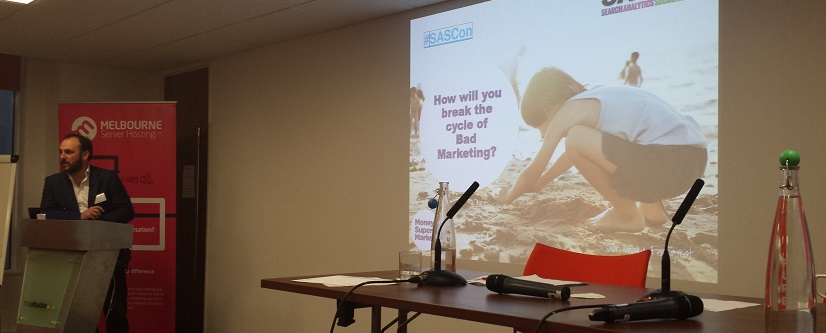
The final session of the day was from Phil MacKechnie, Head of Organic Performance at MoneySupremarket.com. Starting off with some exciting statistics, the three websites within the group TravelSupermarket.com, MoneySavingExpert.com and MoneySupermarket.com generate a huge 8 million visits per week.
Starting again with a key theme from throughout the day, the message was clear that businesses need to stop ignoring their customers and start to engage with them. Listen to them, help and support their needs with all marketing activities. There is no need to go chasing new big and shiny things, instead get back to the basics and start with your product, place, sales service and promotion. All of which need to be 100% focused on your customers.
Content is key for them as they communicate with their customers, so businesses need to get some good ideas and work together with key stake holders throughout the organisation. Working in silos has to stop and collaborative working is the only way to succeed long term. Purely from an efficiencies point, working together means more effective marketing spend and data can be shared between teams easily. Don’t get stuck in a content rut, understand what is working and what isn’t then adapt as necessary. This may result in having to look at team structures to understand how teams can work more effectively together.
A phenomenal 50% of all traffic is from mobile and tablet devices on TravelSupermarket.com, which really does highlight that a responsive website needs to be the number 1 priority in 2014. Customers are accessing your brand, content and website throughout the day on multiple devices, so your business needs to seriously consider what this means and what needs to be done to improve all these areas.
On the Search Engine Optimisation front, one only has to look at the messages Google is putting out about what not to do. These are clear indicators about what Google doesn’t like. Instead, start to look at campaigns and events as this will help with your Search Engine Optimisation efforts as well as building your brand. One message following on from this was that businesses that don’t have a strong brand online are going to find it ever more difficult to compete as customers look towards recognisable brands when purchasing online.
Finally the focus turned to KPIs within your business and the importance of getting these aligned. If different departments have competing KPIs then this simply isn’t going to work. Instead, work to align your business so all departments are working towards a clear strategy to target your customers.
Summary
Overall the SAScon event was extremely insightful as I’m sure you can see from the masses of information above. Hopefully this will give your business some food for thought about what you need to be working on in 2014 to succeed. Some of the key messages throughout is that you need to ensure your entire organisations is working towards a clear strategy to target your customers and forget about working in silos. There are some exciting examples above about how you can increase your organic reach across all channels.
Michael Cropper
Latest posts by Michael Cropper (see all)
- WGET for Windows - April 10, 2025
- How to Setup Your Local Development Environment for Java Using Apache NetBeans and Apache Tomcat - December 1, 2023
- MySQL Recursive Queries – MySQL While Loops – Fill Zero Sum Dates Between Dates - October 6, 2023

